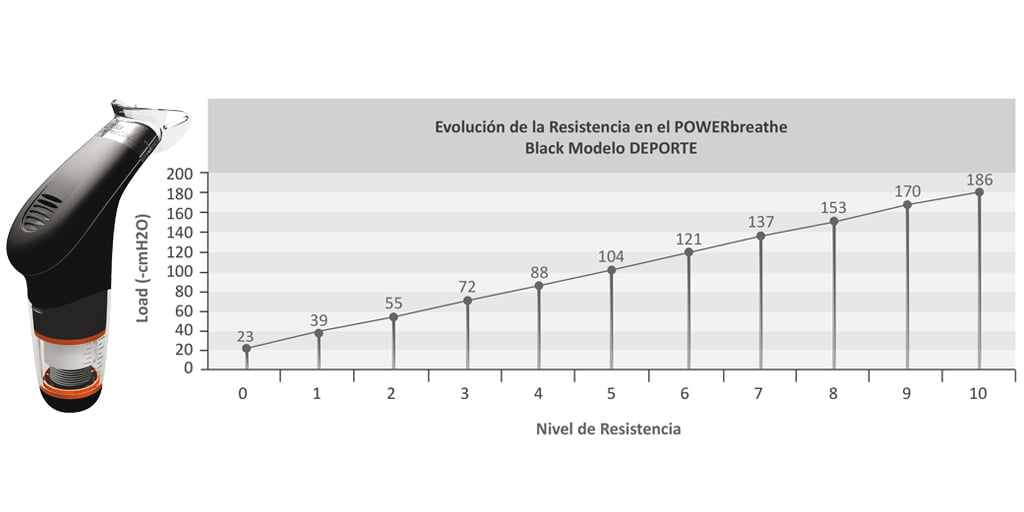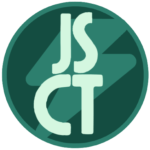Table of Contents
- What is IMT and Why is it Relevant in Cycling?
- Benefits of IMT for Cycling
- Scientific Evidence Behind IMT
- How is IMT Performed?
- Recommended Protocols for Cyclists
- Benefits of IMT for sedentary population
- Contraindications and Side Effects of Inspiratory Muscle Training (IMT)
- Conclusions
- References
What is IMT and Why is it Relevant in Cycling?
Inspiratory Muscle Training (IMT) consists of a series of exercises designed to strengthen the muscles involved in breathing. These muscles, such as the diaphragm and intercostals, play a fundamental role in respiratory efficiency, especially in endurance sports like cycling.
During prolonged efforts, respiratory fatigue can limit performance. This fatigue not only affects the muscles’ oxygenation capacity but also increases the perceived effort, reducing exercise tolerance. Strengthening the inspiratory muscles through IMT has been shown to reduce perceived effort and improve endurance during training and competitions. There are several devices available on the market for this type of training, digital, mechanical, with a single resistance level or multiple, only inspiratory, only expiratory, or both. The one you can see in the picture below is one of the most well-known, a mechanical IMT device with various resistance levels, as shown in the graph. Digital devices, besides being more accurate, have a unique feature: they can measure PIMax (Maximum Inspiratory Pressure), equivalent to 1RM in gym workouts, making them more comprehensive for evaluation purposes.

Benefits of IMT for Cycling
- Improved Respiratory Efficiency: Inspiratory muscle training allows for deeper and more controlled breathing, resulting in greater functional lung capacity.
- Reduced Respiratory Fatigue: During high-intensity efforts, inspiratory muscles tend to fatigue, affecting the ability to maintain a steady pace. IMT delays this process.
- Decreased Perception of Effort: By improving respiratory capacity, cyclists can perceive less effort at moderate and high intensities, making it easier to maintain speed and power for longer.
Scientific Evidence Behind IMT
Numerous studies have demonstrated the benefits of IMT for endurance athletes. A study by Illi et al. (2012) indicated that incorporating IMT into daily training can improve effort capacity in aerobic sports. Additionally, it suggests a reduction in fatigue and better adaptation to prolonged effort. In cycling, where respiratory demand is constant and high, these adaptations are key to improving work economy and maintaining high speeds on challenging terrains.
Another relevant study by Edwards and Walker (2009) showed how IMT can be an effective tool to enhance ventilatory capacity and exercise tolerance in high-level cyclists. The research demonstrated that cyclists who regularly performed IMT improved their time to exhaustion in high-intensity cycling tests.
Besides the general performance benefits of IMT for cycling, it has shown specific improvements in cyclists who compete or train at high altitudes. A study by Downey et al. (2007) investigated the effects of IMT on cyclists training at high altitude. The study found that those who followed an IMT protocol for 6 weeks showed a significant improvement in their ability to sustain intense efforts at altitudes above 2,000 meters, so IMT improved performance at altitude as well as at sea level.
Cyclists trained with IMT not only improved their performance at sea level but also better managed the relative hypoxia of altitude. This is attributed to the acquired respiratory efficiency that allowed for better oxygenation under low oxygen pressure conditions, reducing the impact of hypoxia on muscle performance.
How is IMT Performed?
Inspiratory muscle training can be done using respiratory resistance devices that force the muscles to work harder during inhalation. These devices adjust air resistance, requiring the respiratory muscles to generate more force to inhale. The typical protocol includes daily sets of 30 breaths with progressive resistance.
The most common devices include PowerBreathe and Airofit. Both allow resistance adjustment as the muscles strengthen, offering an appropriate progression to avoid performance plateaus.
Recommended Protocols for Cyclists
For cyclists, a basic IMT program can be structured as follows:
- Frequency: 4-5 times a week.
- Duration: 2 sets of 30 breaths per session.
- Progression: Start with low resistance, increasing it every two weeks as adaptation occurs.
Another option could be experimenting with more traditional protocols, like 5 x 5 repetitions (RIR 2-3). However, this type of training may not have as much scientific backing. Such training might be more suited to strength or power sports, as it focuses more on the maximum strength of the respiratory muscles. In strength or power sports, adding expiratory training alongside inspiratory training might be more recommended, as it improves forced exhalation and core muscles involved in expiration, such as the rectus abdominis and obliques.
It is also important to note that incorporating an IMT training block will lead to increased fatigue in the respiratory muscles (which could acutely reduce performance in subsequent high-intensity exercises on the same or the next day) and most likely soreness that can be bothersome 1-2 days after training. Therefore, we recommend introducing it initially during a base period when high-intensity training is not frequent, and in later phases, transitioning to maintenance work by reducing IMT days to 1 or 2 per week or reducing the number of repetitions per session. Additionally, when performing the 30-repetition protocol, you might experience dizziness in the first sessions due to increased forced ventilation, so it might be helpful to start with fewer repetitions and progress as training advances.
Benefits of IMT for sedentary population
Inspiratory muscle training (IMT) not only applies to sports but also shows significant benefits for the health of people who do not regularly engage in sports. Respiratory muscles like the diaphragm and intercostals can weaken over time due to physical inactivity, respiratory diseases, or simply aging. IMT can help improve respiratory function in these individuals, offering several key advantages:
1. Improved Lung Capacity
IMT helps increase the efficiency of the muscles responsible for breathing, leading to improved lung capacity. In people with respiratory diseases such as asthma, COPD (chronic obstructive pulmonary disease), or sleep apnea, training these muscles can alleviate symptoms and improve quality of life. Studies have shown that COPD patients who performed IMT experienced significant improvements in their ability to perform daily activities and a reduction in dyspnea (difficulty breathing).
2. Improved Blood Pressure Control
IMT can also have a positive impact on blood pressure regulation. Several studies have found that this type of training can help reduce blood pressure in people with hypertension by improving endothelial function (the endothelial cells control the dilation and constriction of blood vessels). In this way, IMT presents itself as a complementary tool for managing hypertension.
A study by Vranish et al. (2017) showed that IMT can significantly lower blood pressure in adults with hypertension. The study revealed that respiratory muscle training over 6 weeks reduced both systolic and diastolic blood pressure, in addition to improving vascular function. The observed improvements were as follows:
- Systolic blood pressure: Decreased by an average of 12 mmHg, representing a 9% reduction.
- Diastolic blood pressure: Decreased by 5 mmHg, equivalent to a 6% reduction.
- Additionally, there was a 14% improvement in systemic vascular resistance, indicating better vascular function.
3. Better Quality of Life in Older Adults:
As we age, the strength and endurance of the respiratory muscles tend to decrease, which can result in reduced respiratory capacity. IMT is a non-invasive intervention that has been shown to improve lung functional capacity in older adults. This enables them to maintain a better ability to perform basic physical activities such as walking or climbing stairs, thereby improving their independence and quality of life.
4. Support in the Rehabilitation of Post-COVID-19 Patients:
In post-COVID-19 recovery, where many patients have experienced a decrease in respiratory function, IMT can play a crucial role. After the illness, some people present weakness in the respiratory muscles due to prolonged hospitalization or the severity of the infection. IMT programs can help accelerate the recovery of respiratory function and improve the overall physical capacity of these patients.
Contraindications and Side Effects of Inspiratory Muscle Training (IMT)
Inspiratory muscle training (IMT) is generally safe and well-tolerated by most people, but there are some contraindications and possible side effects to consider:
Contraindications:
- Severe heart problems: People with severe heart disease or uncontrolled hypertension should consult their doctor before starting IMT, as increased thoracic pressure during forced breathing may affect cardiovascular function.
- Severe respiratory disorders: People with conditions such as pneumothorax (collapsed lung) or advanced emphysema should avoid IMT, as the pressure exerted during training could aggravate these problems.
- Recent thoracic or abdominal surgery: After surgeries such as thoracic or abdominal surgery, IMT may exert too much pressure on these areas, delaying healing or increasing the risk of complications.
Possible Side Effects:
- Respiratory muscle fatigue: As mentioned before, just like any trained muscle, the respiratory muscles can fatigue if overloaded. This can lead to a temporary sensation of exhaustion or dyspnea (difficulty breathing) after exercise, as well as soreness.
- Dizziness or vertigo: During respiratory training, some people may experience dizziness due to hyperventilation or excessive effort. It is important to perform the exercises in a controlled manner and not exceed personal capacity. We stress the importance of progression to mitigate this effect.
- Chest or diaphragm pain: In the early IMT sessions, it is possible to feel slight discomfort or pain in the diaphragm or intercostal muscles due to the effort. This pain tends to decrease as the muscles strengthen.
Conclusions
Inspiratory muscle training is an effective tool for improving performance in cycling, especially in endurance events. The improvement of respiratory efficiency, the reduction of fatigue, and the increased capacity to handle prolonged efforts are some of the key benefits that IMT offers cyclists. Including it in a training plan can make a significant difference in performance during long training sessions and demanding competitions. Additionally, it has the potential to improve certain pathologies related to the respiratory system.
References
Illi, S.K., Held, U., Frank, I., & Spengler, C.M. (2012). “Effect of respiratory muscle training on exercise performance in healthy individuals.” Sports Medicine.
Edwards, A.M., & Walker, R.E. (2009). “Inspiratory muscle training and endurance cycling performance.” European Journal of Applied Physiology.
Downey, A.E., Chenoweth, L.M., Townsend, D.K., Ranum, J.D., Ferguson, C.S., & Harms, C.A. (2007). “Effects of inspiratory muscle training on exercise responses in normoxia and hypoxia.” Respiratory Physiology & Neurobiology.
Gosselink, R., De Vos, J., Van den Heuvel, S. P., Segers, J., Decramer, M., & Kwakkel, G. (2011). “Impact of inspiratory muscle training in patients with COPD: what is the evidence?” European Respiratory Journal, 37(2), 416-425.
Vranish, J. R., & Bailey, E. F. (2017). “Daily inspiratory muscle training lowers blood pressure and vascular resistance in healthy adults.” Respiratory Physiology & Neurobiology, 240, 78-88.



